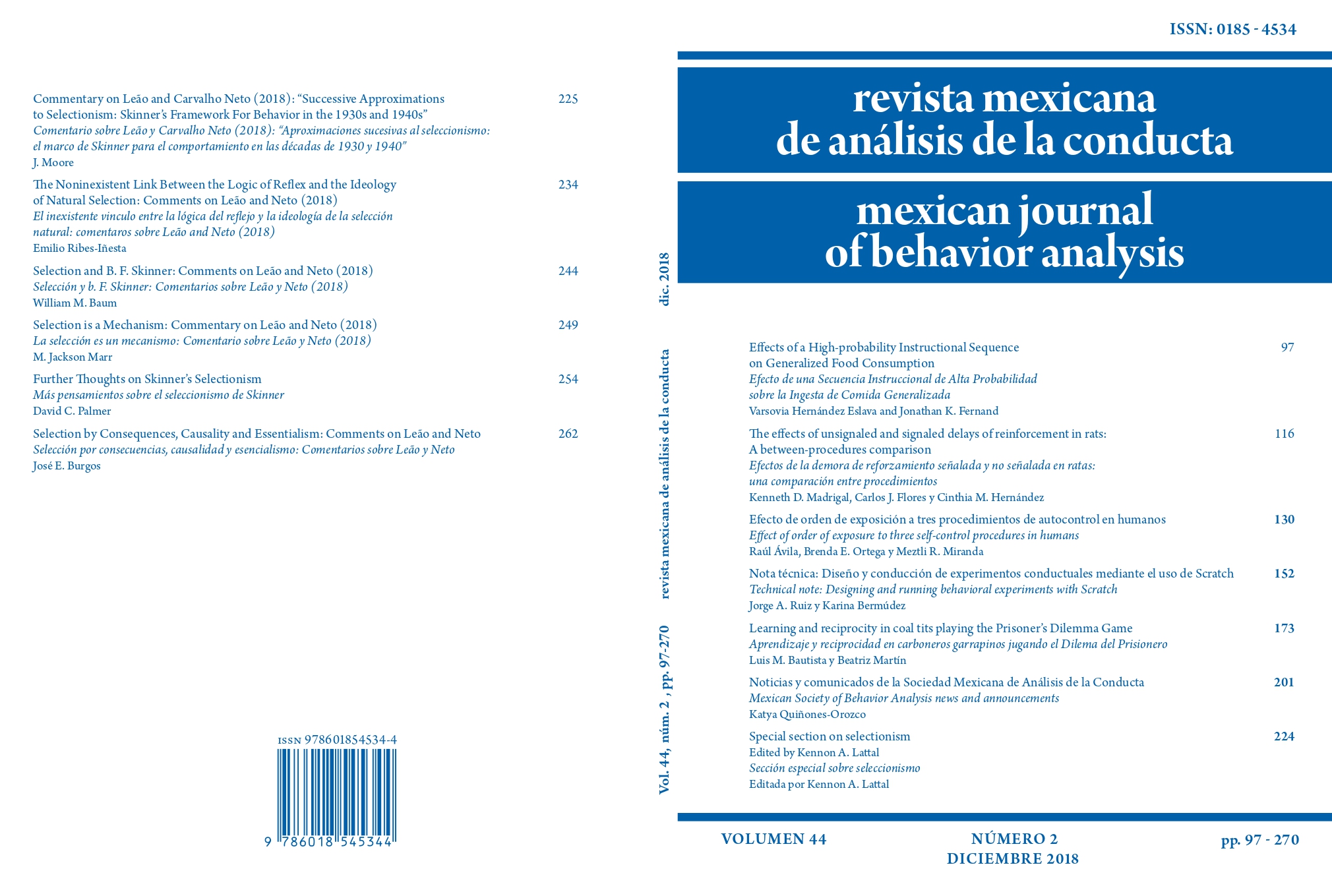Effects of a High-probability Instructional Sequence on Generalized Food Consumption
Contenido principal del artículo
Resumen
The purpose of the current study was to examine the effects of delivering a high-probability instructional sequence on generalized consumption of nonpreferred foods with similar properties to treatment foods. The participant was a 5-year-old, typically-developing child with a history of food selectivity. The participant was asked to complete each step of an instructional sequence in which the final step was consumption of a nonpreferred food. Praise was delivered after compliance to complete each step and a preferred food was delivered after compliance with the final step. The high-probability instructional sequence was effective in increasing consumption of nonpreferred foods and generalization was observed to nontarget foods with similar properties. The importance of tailoring procedures to treat food selectivity displayed by typically developing children is discussed.

